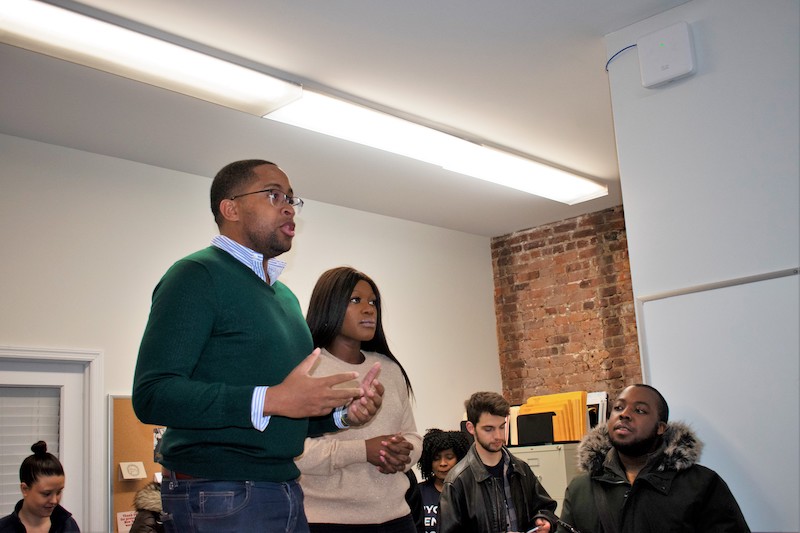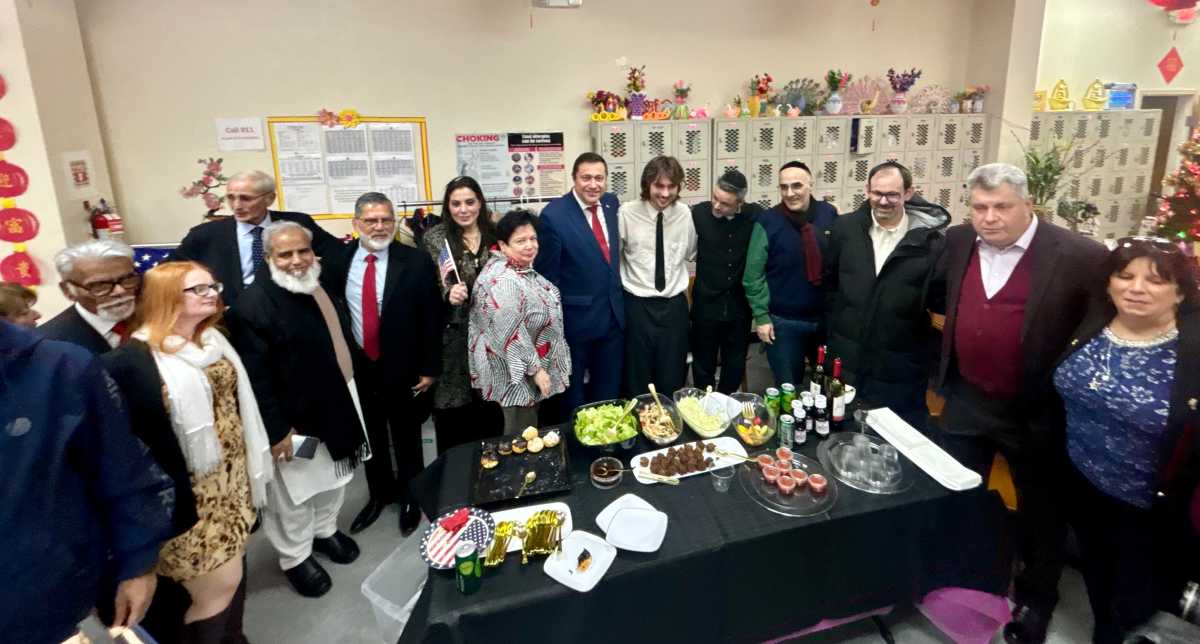State Sen. Zellnor Y. Myrie (D-Brownsville, Crown Heights, East Flatbush, Gowanus, Park Slope, Prospect Heights, Prospect Lefferts Gardens, South Slope, Sunset Park) and Assemblywoman Diana C. Richardson (D-Crown Heights, Prospect Lefferts Gardens, East Flatbush) led about 50 volunteers in canvassing Crown Heights Saturday to inform local residents about the importance of being counted in the 2020 Census.
The census dates back to the founding of this country, and Article One of the United States Constitution (section II), which directs the population be counted at least once every 10 years and the resulting counts is used to determine members from each state in the House of Representatives and, by extension, in the Electoral College.
Census data also directly affects how more than $400 billion per year in federal and state funding is allocated to communities for neighborhood improvements, public health, education, transportation and more.
“You literally have the destiny of the community in your hands. Very rarely, do we get to control the trajectory of our neighborhoods,” said Myrie about the importance of the census. “Less than 10 questions, that take less than 10 minutes, and it determines the next 10 years.”

Myrie Spokesperson Jonathan Timm told the volunteers that the area they were focusing on had one of the lowest return dates in the city and the country for the census. He talked about a common fear among people, especially the undocumented residents, that census will share their data.
“Census information is safe, it is secure, it is protected by law. So it cannot be shared with immigration services. It cannot be shared with law enforcement, and it cannot be used against you,” said Timm.
“One of the main problems we see is definitely the stresses in our education system. When only 10 children are counted but 30 show up on the first day of school, we are now beginning to do more with less,” Richardson told the Kings County Politics. “The users of the system are greater than the resources that were sent because they were undercounted.”.
“All the issues we are about are impacted by it,” said Myrie to highlight the importance of the census. “Our schools are massively underfunded. Getting the correct count in this census will help bring out the resources.”
New York state allocated a $40 million budget for the census compared to California’s $187.2 million.
“I think the city has done a better job, but it is disappointing that there has been a lag. But we are going to make do with what we have. That is why we are hosting events like these,” Myrie said to compare New York City and New York state’s efforts to fund the census outreach.

One of the youngest members of the crowd in Myrie’s office was 4-year-old Perciese Gassant who came with her mother. “The next 10 years of this young person’s life will be determined by the census,” Myrie told the crowd.
“Often at times, we as community residents, what can we do? And this is such an easy and simple way. Just fill out the 10 questions on the census, and for the next 10 years, you impact the community,” said Richardson about the community involvement.
“We learned that the census is coming and I wanted to volunteer,” said Kathleen Livingston, one of the volunteers who came for the 10 a.m. shift. “This happens once in 10 years, and it determines most of the federal funding that our community gets as well as the number of representatives,” she added.
From March 12 to 20, households will begin receiving official Census Bureau mail with detailed information on how to respond to the 2020 Census online, by phone or by mail, according to the U.S. Census Bureau.










